Day 4 in England- Hampton Court Palace
Our fourth morning in England found us on a train heading about an hour southwest of the City of London. Reaching our destination, we were greeted by our old friend, the River Thames, and a spectacular view of Hampton Court Palace, where we would spend the day exploring 500 years of British history and material culture.
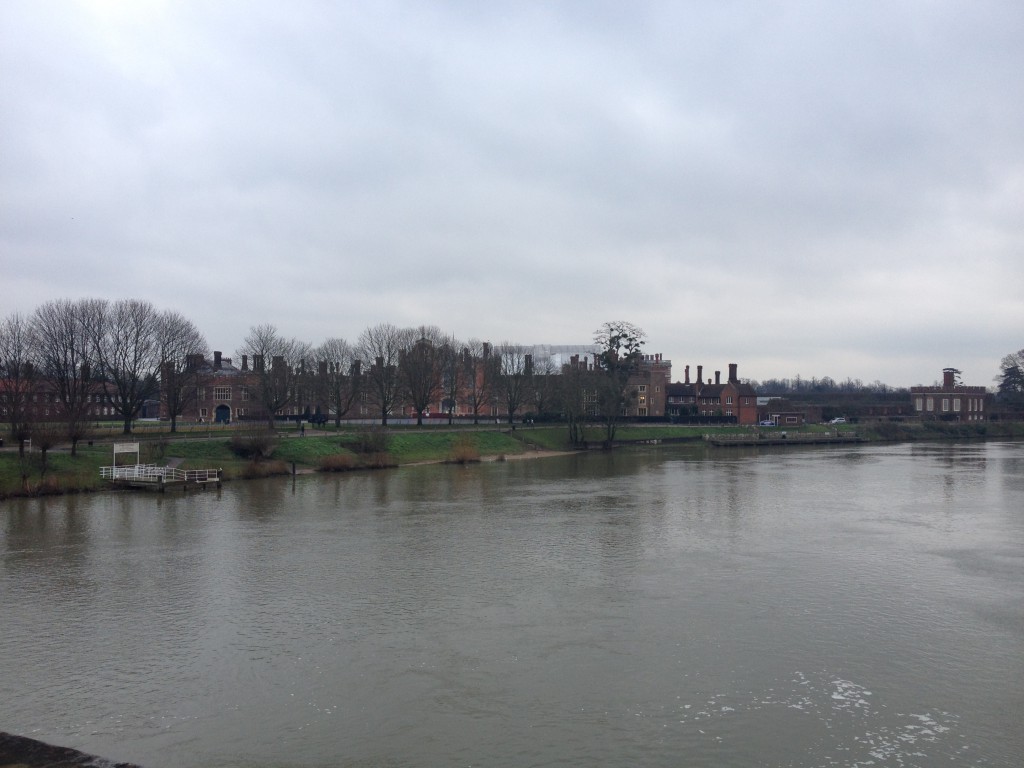 Our first glimpse of Hampton Court Palace over the River Thames
Our first glimpse of Hampton Court Palace over the River Thames
Hampton Court Palace was built for King Henry VIII in the sixteenth century, so we fittingly began our visit with the Tudors. Marc Meltonville, food historian and our enthusiastic guide for the morning, led us on an excellent tour of varied Tudor spaces related to food, cooking, and dining. As Marc explained, “We eat when we are hungry, but we dine for every other reason.” His tour proved that point, weaving together food, architecture and furnishings, and social history as we wandered from the kitchens’ gated entrance to food storage areas, roasting kitchens, and the grand dining hall, lined with striking Flemish tapestries.
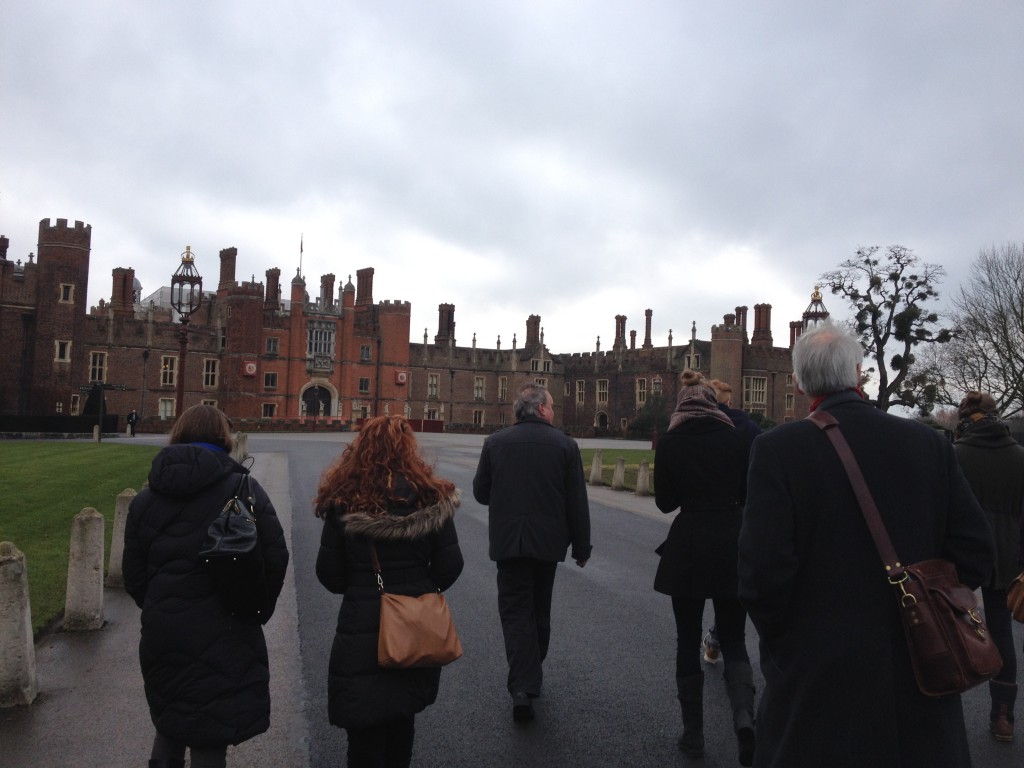 Beginning our visit by following Marc past the front of the palace to the back gate, the entrance to the kitchens
Beginning our visit by following Marc past the front of the palace to the back gate, the entrance to the kitchens
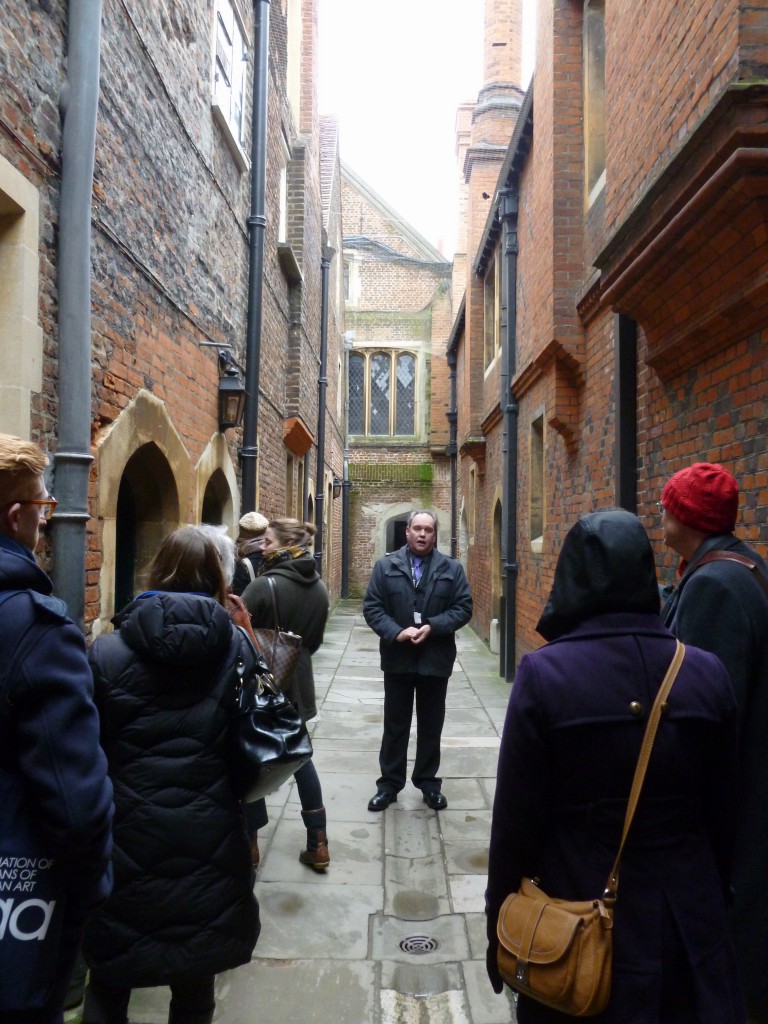 Marc tells the group about the palace “refrigerator” while standing in it! All food requiring cool temperatures was stored here
Marc tells the group about the palace “refrigerator” while standing in it! All food requiring cool temperatures was stored here
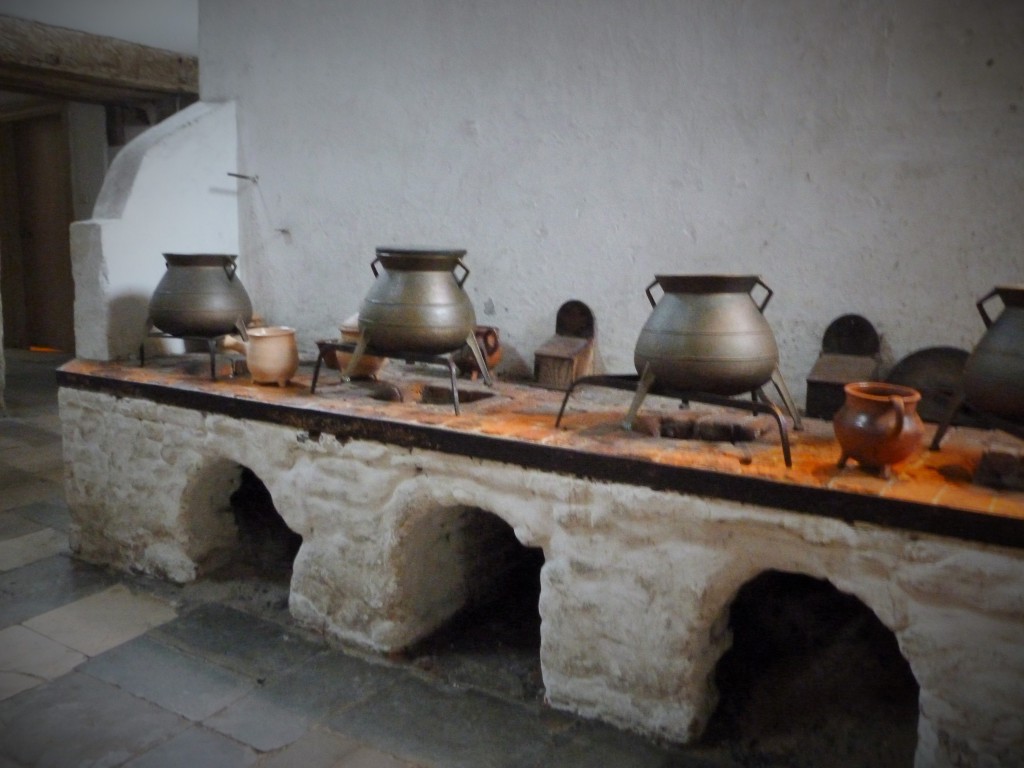 The “cooking range” inside Henry VIII’s kitchens
The “cooking range” inside Henry VIII’s kitchens
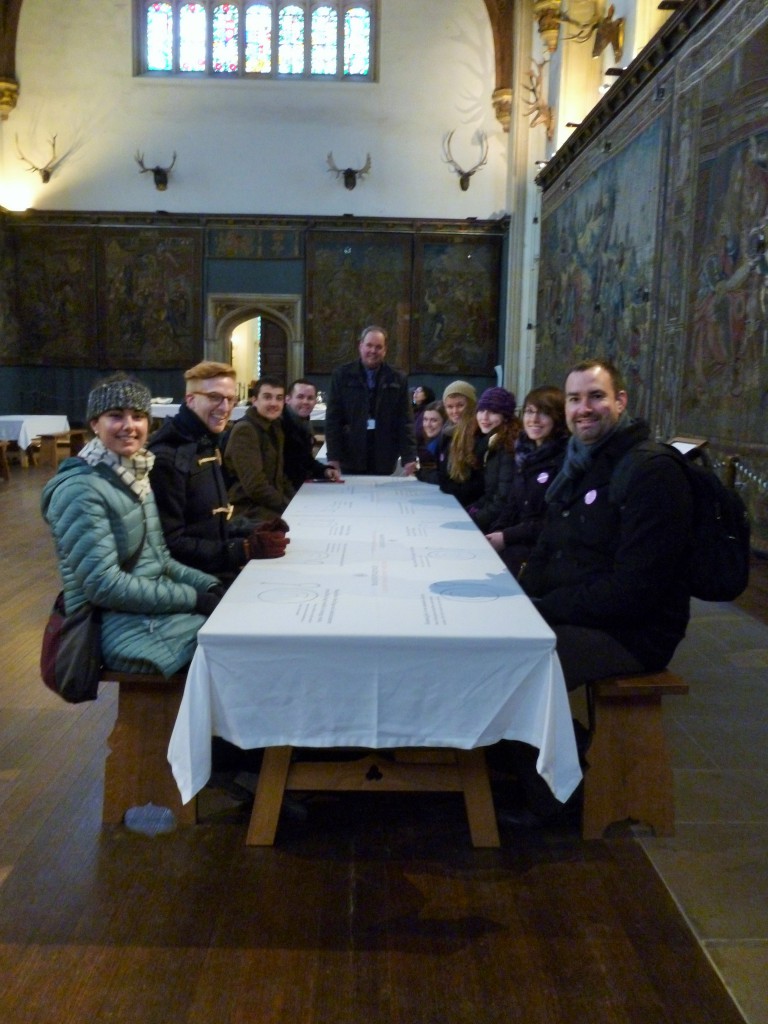 The group seated in the spectacular Tudor dining hall. We were all impressed by the tabletop interpretation, with facts printed on the tablecloth at each “table setting”
The group seated in the spectacular Tudor dining hall. We were all impressed by the tabletop interpretation, with facts printed on the tablecloth at each “table setting”
Throughout the morning, Marc also made note of different reconstructions for interpretation purposes and extensive modifications to the palace during the Georgian and Victorian periods. We saw both of these notions come to life during the afternoon as we moved out of the Tudor kitchens and into the Georgian state apartments, steeped heavily in the Baroque.
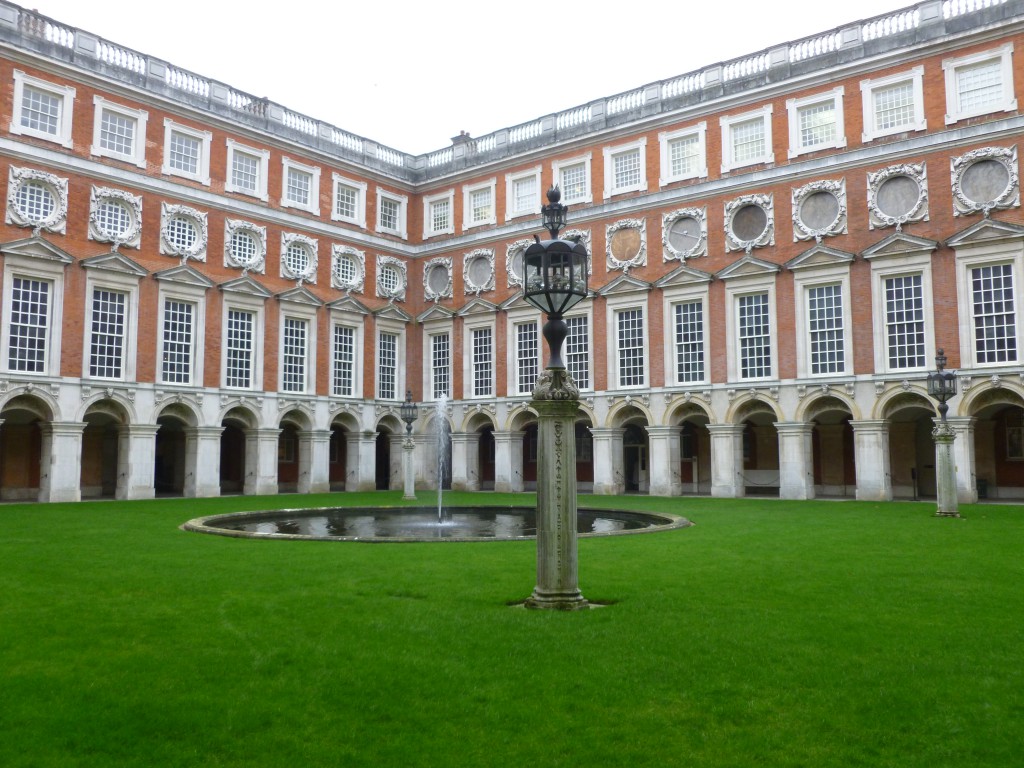 Baroque courtyard, inspired by Versailles, at the center of the state apartments
Baroque courtyard, inspired by Versailles, at the center of the state apartments
Matthew Storey, collections curator at Hampton Court, led us on a phenomenal tour of the Queen’s Apartments, from massive, lavish public spaces like the Guard Chamber and the Public Dining Room to the smaller, more intimate, private state rooms, like the queen’s bedchamber and dressing room. It was fascinating to learn about these public-private functions of Hampton Court as well as the palace’s collection. I was particularly fascinated by the creative interpretive strategies staff have employed to fill in gaps in the collection and engage visitors in the complex story of the British Crown.
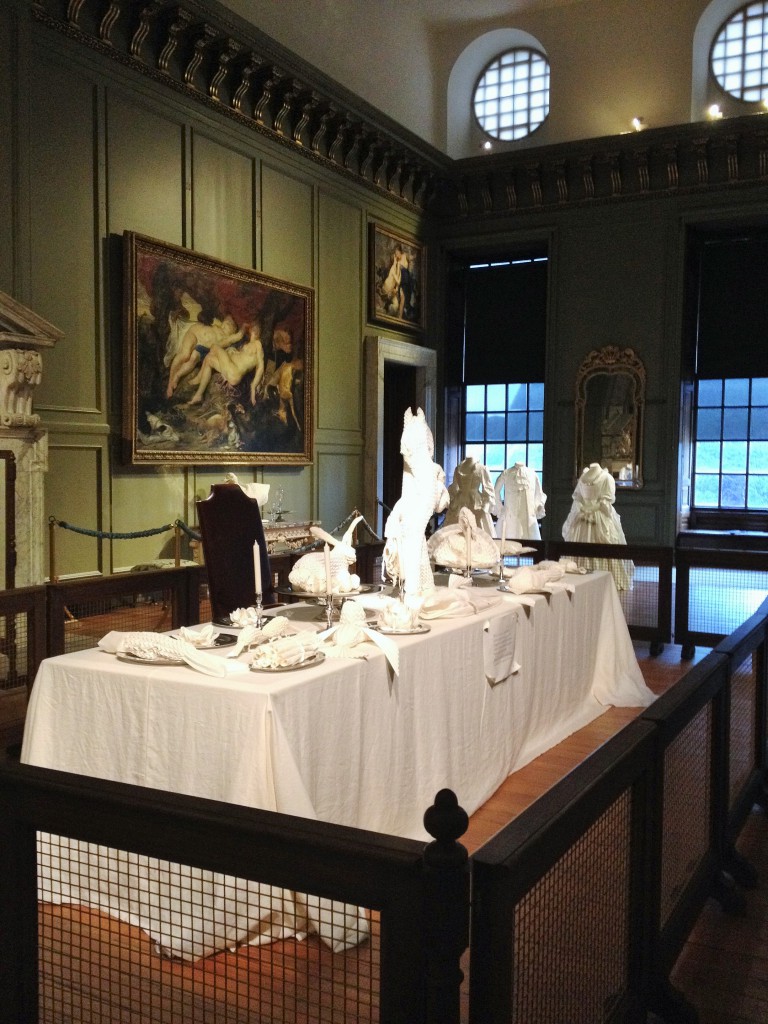 Table set in the Public Dining Room with paper sculptures to recall food served in the 18th century. The barrier would keep the public at sufficient distance from the table while watching the King and Queen dine.
Table set in the Public Dining Room with paper sculptures to recall food served in the 18th century. The barrier would keep the public at sufficient distance from the table while watching the King and Queen dine.
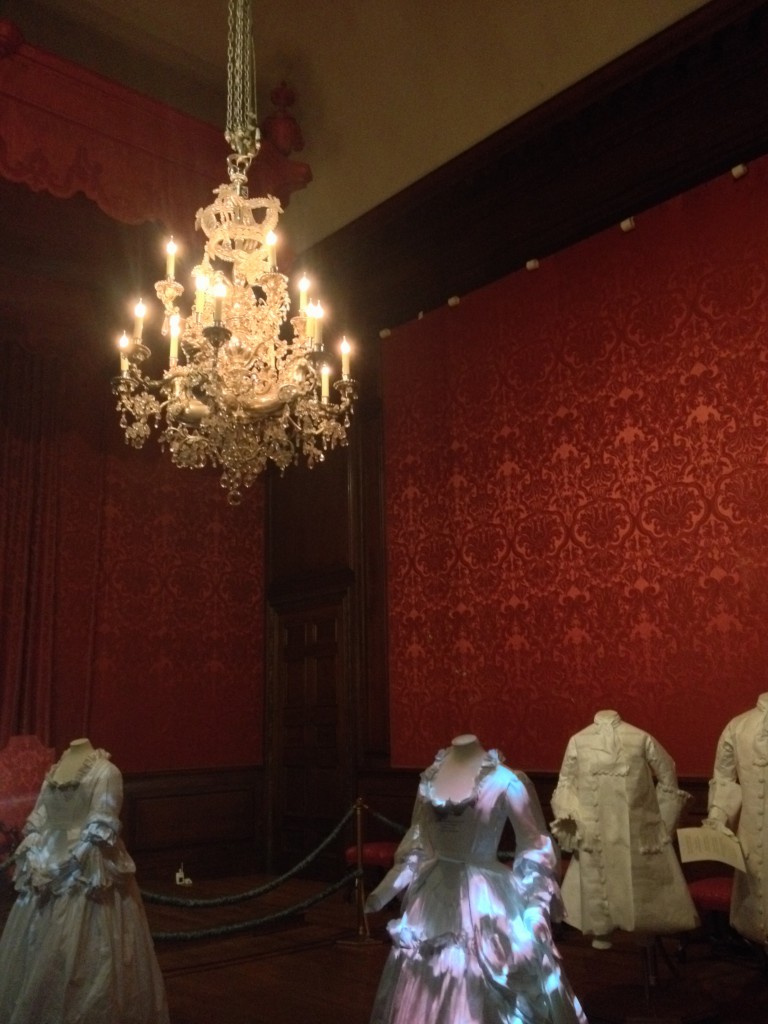 In the Privy Chamber, mannequins dressed in Tyvek textile reproductions were placed throughout the room to recall its use. Periodically, printed textiles from the Victoria & Albert Museum’s collection were projected onto the white Tyvek forms. This is an exciting interpretive technique that allows visitors to move freely through the space – an engaging experience!
In the Privy Chamber, mannequins dressed in Tyvek textile reproductions were placed throughout the room to recall its use. Periodically, printed textiles from the Victoria & Albert Museum’s collection were projected onto the white Tyvek forms. This is an exciting interpretive technique that allows visitors to move freely through the space – an engaging experience!
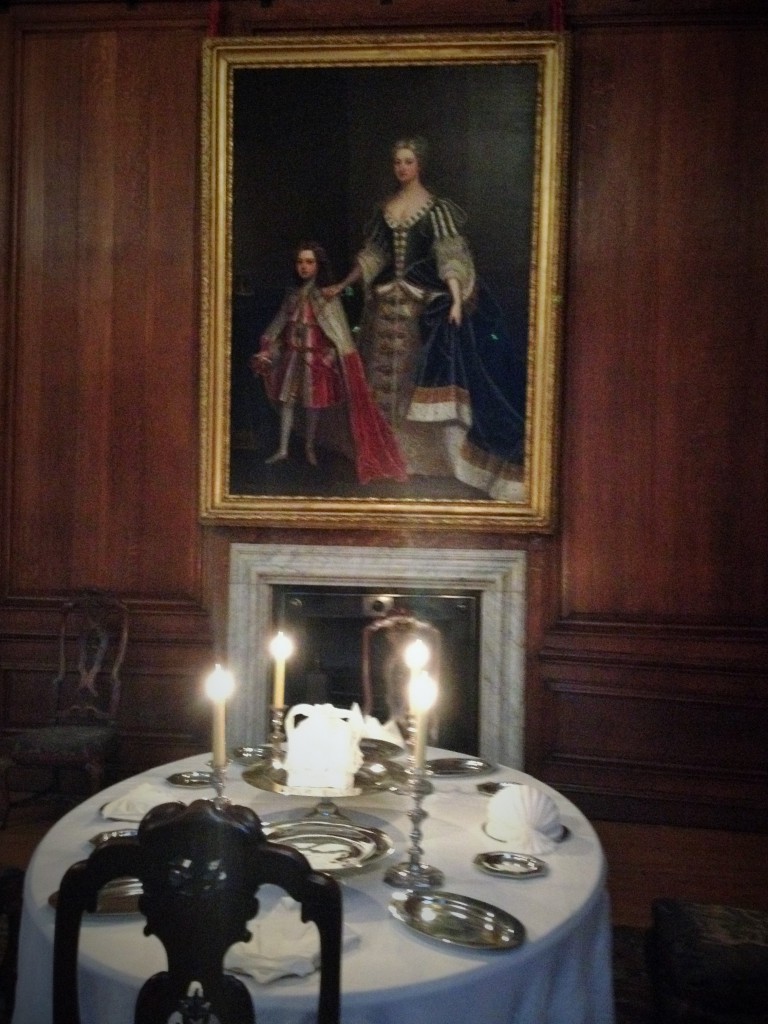 For comparison with the Public Dining Room, this is one view of the private dining room in the Queen’s Apartments. It is darker, smaller, and more intimate than its public equivalent.
For comparison with the Public Dining Room, this is one view of the private dining room in the Queen’s Apartments. It is darker, smaller, and more intimate than its public equivalent.
Nearing the end of our visit, we had a few free moments to explore the gardens and to reflect on all we had seen. Hampton Court Palace provided us with the unique opportunity to study stylistic changes over a 500-year period firsthand as well as to learn from exhibitions that seemed to place visitor engagement and learning at the forefront.
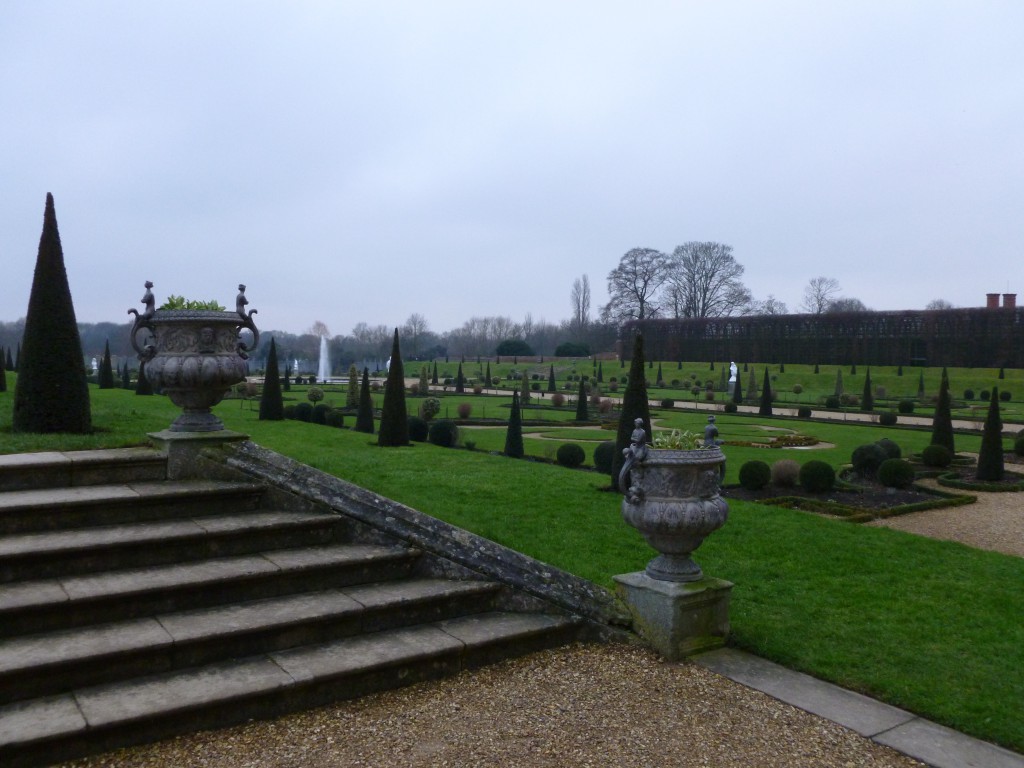 Wandering through the garden at Hampton Court.
Wandering through the garden at Hampton Court.
By Katie Bonanno, Winterthur Program in American Material Culture, Class of 2016
